करी पत्ते एक छोटे पर्णपाती सुगंधित झाड़ी का भाग होते हैं, जिसका वैज्ञानिक नाम मुरराया कोएनिगी होता है, जो रूटेशियाई कुल से संबंधित होता है। इसे प्राकृतिक औषधीय पौधा माना जाता है। दक्षिण एशिया इस पौधे का घर है, और यह श्रीलंका, बांग्लादेश, चीन और भारत जैसे देशों में पाया जाता है। भारत में, यह हिमालय के नीचे महाराष्ट्र, तमिलनाडु, केरल और असम जैसे राज्यों में पाया जाता है।1-3
इस पौधे में चमकदार हरे पत्ते होते हैं जो वसंत, ग्रीष्म और मानसून के दौरान वृद्धि करते हैं और ये सर्दियों में गिर जाते हैं। तमिल और कन्नड़ साहित्य में ऐसे संदर्भ हैं जो मुरराय कोएनिगी को ‘करी’ के रूप में वर्णित करते हैं, जिसका अर्थ है सब्जियों के लिए स्वाद एजेंट के रूप में इस्तेमाल किया जाने वाला ‘मसालेदार सॉस’। यह भारत में सबसे लोकप्रिय मसाला और छौंक के रूप में पहचाना जाता है। इसे आमतौर पर हिंदी में कड़ीपत्ता या मीठा नीम, तमिल में करुवेप्पिलई और मलयालम में करिवेप्पिले कहा जाता है।2,3
सूखे और ताज़े दोनों तरह के करी पत्ते में अच्छे पोषक तत्व होते हैं और यह स्वास्थ्य के लिए फ़ायदेमंद होते हैं।
| पोषक तत्वों की मात्रा | ताज़ा करी पत्ते | सूखे करी पत्ते |
| प्रोटीन (ग्राम) | 6 | 12 |
| कार्बोहाइड्रेट्स (ग्राम) | 18.7 | 64.31 |
| फ़ैट (ग्राम) | 1 | 5.4 |
| विटामिन C (मिलीग्राम) | 4 | 4 |
| β-कैरोटीन (माइक्रोग्राम) | 7560 | 5292 |
| कैल्शियम (मिलीग्राम) | 830 | 2040 |
| आयरन (मिलीग्राम) | 0.93 | 12 |
टेबल 1: प्रति 100 ग्राम करी पत्तों के पोषक तत्वों की मात्रा 1,2
आयुर्वेद के अनुसार, करी पत्ते के बहुत से फ़ायदेमंद गुण हो सकते हैं: 1
Curry patte (Curry Leaves) ke sambhavit upyog:
करी पत्तों के संभावित उपयोग अलग-अलग स्वास्थ्य स्थितियों के लिए हो सकते हैं। कई अध्ययनों में करी के पत्तों के फ़ायदे इस प्रकार हैंः
ब्लड शुगर के प्रबंधन में करी पत्तियों की प्रभावशीलता का अध्ययन 2012 में डुसाने एट अल द्वारा एक पशु मॉडल में किया गया था। यह ब्लड शुगर के स्तर में उल्लेखनीय कमी लाता है। पत्तियों के अर्क का यह ब्लड शुगर को कम करने वाला गुण, ब्लड शुगर के स्तर को कम करने में मदद कर सकता है। ये प्रभाव इंसुलिन के जैसे प्रभाव हो सकते हैं, जो ब्लड शुगर को या तो अग्नाशय के इंसुलिन उत्पादन को बढ़ाकर या विशिष्ट एंजाइमों के कारण कोशिकाओं द्वारा ग्लूकोज अप-टेक करके कम कर सकता है। इससे पता चलता है कि करी पत्ता डायबिटीज़ मेलेटस के प्रबंधन में प्रभावी हो सकता है।1,3,4
डायबिटीज़ एक गंभीर बीमारी है और इसका उचित निदान किया जाना चाहिए। दुर्भाग्य से, उपरोक्त जानकारी अपर्याप्त है क्योंकि ये अध्ययन मनुष्यों पर नहीं किए गए हैं। हालांकि, शरीर में ब्लड शुगर के स्तर को नियंत्रित करने पर करी के पत्तों के सकारात्मक प्रभाव को दर्शाने के लिए अभी और अधिक मानव परीक्षणों को करने की आवश्यकता है। इसलिए डॉक्टरों से परामर्श लेना और इसे केवल दवा के रूप में लेना आवश्यक है।
करी पत्तों और उनके असेंशियल ऑइल का फ़ायदा यह है कि वे सूजन कोशिकाओं के खिलाफ कार्य कर सकते हैं। जब यह बाहरी सतही चोटों पर लगाया जाता है जैसे कि त्वचा छिलने, जलने और खरोंच, तो ये घाव भरने वाली गतिविधि दर्शा सकते हैं। पत्तियों से बने असेंशियल ऑइल का उपयोग क्रीम और अन्य योगों में किया जा सकता है जो धूप से सुरक्षा, त्वचा की चमक को बढ़ाने और खुरदरी त्वचा को मॉइस्चराइज़ करने के लिए प्रभावी हो सकते हैं। करी पत्ते का तेल त्वचा की समस्याओं जैसे कि फोड़े, मुहांसे, खुजली, रिंगवर्म, ज़ख़्मी पैर आदि से निपटने में भी सहायक हो सकते हैं।1-3
त्वचा के स्वास्थ्य को बनाए रखने के लिए करी पत्तियों के लाभकारी प्रभावों को विकसित करने के लिए आगे के अध्ययनों की आवश्यकता है। इसलिए लोगों को करी के पत्तों से बने किसी भी हर्बल दवा के सेवन से पहले डॉक्टर से परामर्श करना चाहिए। इसके अतिरिक्त, हम आपको सलाह देते हैं कि डॉक्टर से परामर्श किए बिना आयुर्वेदिक या हर्बल दवा के साथ चल रही दवाओं को बंद या प्रतिस्थापित न करें।
ज़ी एट अल द्वारा 2006 में किए गए एक पशु अध्ययन में करी पत्ते ने कुल कोलेस्ट्रॉल और ट्राइग्लिसराइड (वसा) के स्तर को काफ़ी कम कर दिया। करी पत्ते की यह हाइपोलिपिडेमिक (लिपिड कम करने वाली) कार्य इसके एंटीऑक्सीडेंट गुणों के कारण हो सकती है। यह कोलेस्ट्रॉल और कम डेंसिटी वाले लिपिड (खराब कोलेस्ट्रॉल) को कम करने में मदद कर सकता है; इससे पता चलता है कि कोलेस्ट्रॉल और वसा के मेटाबोलिज़्म को कम करने में इसकी संभावित भूमिका हो सकती है।3,4,6
हालांकि, ये अध्ययन मनुष्यों पर प्रभाव को समझने के लिए पर्याप्त नहीं हैं। हमें मानव शरीर में कोलेस्ट्रॉल के स्तर को प्रबंधित करने में करी पत्ते के फ़ायदों के बारे में ज़्यादा जानकारी की आवश्यकता है। इसलिए, कोलेस्ट्रॉल की जांच के लिए करी पत्ते का उपयोग करने से पहले डॉक्टर से बात करना बेहतर होता है।
देसाई एट अल द्वारा 2012 में पशु मॉडल अध्ययन ने खुलासा किया कि करी पत्ते के रस ने लीवर एंजाइम के कार्य में काफ़ी वृद्धि की जो लीवर में लिपिड के ऑक्सीडैशन में सहायता करता है। रस ने लीवर की रक्षा करने वाले कार्य भी दिखाए जो लीवर की क्षति को रोकते हैं।4
ऊपर दी गई जानकारी अपर्याप्त है क्योंकि ये अध्ययन जानवरों पर किए गए हैं। हालांकि, मानव स्वास्थ्य पर करी पत्ते के फ़ायदों को जानने के लिए मनुष्यों पर और अध्ययन आवश्यक है। इसलिए, अपने संबंधित डॉक्टरों से परामर्श करना महत्वपूर्ण है।
हालांकि, कई स्वास्थ्य स्थितियों में करी पत्ते के फ़ायदों को दर्शाने वाले अध्ययन अपर्याप्त हैं और मानव स्वास्थ्य पर करी पत्ते के फ़ायदों की सही सीमा स्थापित करने के लिए आगे के अध्ययन की आवश्यकता है। इसके अतिरिक्त हर व्यक्ति इन जड़ी-बूटियों के प्रति अलग-अलग प्रतिक्रिया दे सकता है। इसलिए, किसी भी चिकित्सीय स्थिति के लिए करी पत्ते का उपयोग करने से पहले डॉक्टर की सलाह लेना आवश्यक है।
करी पत्तों का इस्तेमाल इन तरीकों से किया जा सकता है:
करी पत्ते से बने किसी भी हर्बल सप्लीमेंट को लेने से पहले लोगों को एक सही डॉक्टर से परामर्श लेना ज़रूरी होता है। हम सलाह देते हैं कि आप किसी आयुर्वेदिक डॉक्टर से परामर्श किए बिना आयुर्वेदिक या हर्बल दवाइयों के साथ अपनी वर्तमान दवाओं को न बदलें या न ही उन्हें बंद करें।
कोई महत्वपूर्ण अध्ययन दर्ज प्रमाण नहीं है जो लोगों में करी पत्ते के लक्षण दिखाता है। वैसे, ज़ी एट अल द्वारा 2006 में कुछ अध्ययन में पशु मॉडल में स्थानीय आंतों में जलन दिखाई दी थी।6
हालांकि, अगर आपको पेट में ऐसी जलन महसूस होती है, तो आपको किसी आयुर्वेदिक डॉक्टर से सलाह लेनी चाहिए और तुरंत इलाज कराना चाहिए।
सामान्य तौर पर, करी पत्ते का उपयोग करना सुरक्षित होता है। हालांकि, किसी भी समस्या से बचने के लिए सामान्य सावधानियां बरतने की ज़रूरत होती है।
आपको नियमित रूप से करी पत्ते का सेवन करते समय अपने डॉक्टर द्वारा दी गई सामान्य सावधानियों और निर्देशों का पालन करना चाहिए और आपको कभी भी प्राकृतिक फलों, सब्जियों और जड़ी-बूटियों के साथ स्वयं औषधि नहीं लेनी चाहिए।
इसलिए, अपने डॉक्टर के साथ अपने चल रहे उपचारों पर चर्चा करना और जड़ी-बूटी की खुराक और रूप पर उनकी सलाह का पालन करना ज़रूरी है। वे आपको आपकी स्थिति के आधार पर करी पत्ता खाने का सबसे अच्छा तरीका सुझाएंगे।
करी पत्ते कड़वे होते हैं और उनमें तेज़, तीखी महक होती है।1
पत्तों को बारीक पीसकर छाछ के साथ लेने से खराब पेट का एक अच्छा घरेलू उपाय हो सकता है।1 हालांकि, लोगों को करी पत्ते का इस्तेमाल स्वयं औषधि के रूप में नहीं करना चाहिए। डॉक्टर से सलाह लेना ज़रूरी है।
करी पत्ते में मौजूद कैल्शियम और ज़िंक खनिज और बायोएक्टिव घटक जैसे फोलिक एसिड, बीटा कैरोटीन और राइबोफ्लेविन मौखिक स्वास्थ्य के लिए अच्छे हो सकते हैं और माउथवॉश को बनाने में उपयोग किए जाते हैं। हालांकि, यह जानकारी पर्याप्त नहीं है।1 मुंह के स्वास्थ्य पर करी पत्ते के फ़ायदों को प्रमाणित करने के लिए अधिक अध्ययन की आवश्यकता है।
करी पत्ते के रस में विटामिन ए (β-कैरोटीन) और विटामिन सी होता है, जो बालों के समग्र स्वास्थ्य के लिए फ़ायदेमंद हो सकता है।
करी पत्ते अपने तत्वों के कारण दस्त से लड़ने का गुण दिखाते हैं, जो आंतों के हानिकारक बैक्टीरिया से लड़ सकते हैं।3 लेकिन यह जानकारी अपर्याप्त है और हमें मानव स्वास्थ्य पर करी पत्ते के सही दायरे को प्रमाणित करने के लिए और अधिक अध्ययन की आवश्यकता है।
Disclaimer: The information provided here is for educational/awareness purposes only and is not intended to be a substitute for medical treatment by a healthcare professional and should not be relied upon to diagnose or treat any medical condition. The reader should consult a registered medical practitioner to determine the appropriateness of the information and before consuming any medication. PharmEasy does not provide any guarantee or warranty (express or implied) regarding the accuracy, adequacy, completeness, legality, reliability or usefulness of the information; and disclaims any liability arising thereof.
Links and product recommendations in the information provided here are advertisements of third-party products available on the website. PharmEasy does not make any representation on the accuracy or suitability of such products/services. Advertisements do not influence the editorial decisions or content. The information in this blog is subject to change without notice. The authors and administrators reserve the right to modify, add, or remove content without notification. It is your responsibility to review this disclaimer regularly for any changes.
Millions of people all over the world suffer from fatty liver disease. It occurs when excess fat accumulates in the liver, leading to inflammation and potential liver damage. Although it can be caused by a variety of factors, including alcohol consumption and certain medications, the most common form of fatty liver disease is non-alcoholic fatty liver disease (NAFLD), which is associated with lifestyle factors such as a poor diet and lack of exercise.
Fortunately, there are dietary interventions that can help to reverse the damage done to the liver. By making certain changes to your diet, you can reduce the amount of fat in your liver and improve liver function.
Let us dive into the world of fatty liver diets, exploring the best foods to eat and avoid, as well as some easy-to-follow tips for creating a liver-friendly meal plan1,2.
Did you know?
Fatty liver disease is a prevalent health condition that results from an excess buildup of fat in the liver. While some individuals may not experience any noticeable symptoms, the accumulation of fat can lead to severe liver damage in others. However, the good news is that fatty liver disease is often preventable and reversible through simple lifestyle modifications1.
Fatty liver disease is categorized into four grades based on the amount of fat buildup in the liver.
The following list gives you a gateway to eating foods that are good for you, if you have fatty liver disease:
Here is a list of foods to avoid if you have fatty liver disease:
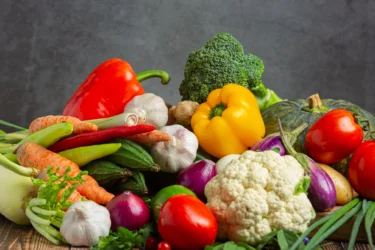
Include plenty of vegetables, fruits, whole grains, nuts, and legumes in your diet. These foods are rich in fibre, vitamins, and minerals, and low in saturated and trans fats, which can be beneficial for individuals with fatty liver disease.

Processed foods, such as fast food, snacks, and baked goods, often contain high amounts of sugar, unhealthy fats, and additives that can worsen fatty liver disease. Processed foods often contain high levels of fructose, unhealthy fats such as trans fats and saturated fats, and additives like high fructose corn syrup, which can increase the amount of fat deposited in the liver and contribute to liver inflammation.

Opt for lean protein sources such as skinless poultry, fish, beans, and lentils over red meats and processed meats, which are high in saturated fats. These foods are high in protein, iron, and fiber.

Sugary beverages such as soda, juice, lemonade, and sports drinks can contribute to the development of fatty liver disease. Sugary and carbonated beverages contain high amounts of fructose and other sugars. When consumed in excess, these sugars are processed in the liver and converted into fat, leading to the accumulation of fat in the liver cells. Instead, opt for water, unsweetened tea, or coffee6.

Overeating can lead to weight gain and increase the risk of fatty liver disease. Be mindful of your portion sizes and consider using smaller plates or bowls to help control your portions. Large portion sizes can contribute to weight gain and obesity, which are risk factors for fatty liver disease. When we eat more calories than our body needs, the excess calories are stored as fat in the liver and other organs, leading to the development of fatty liver disease.

Drinking alcohol in excess can damage the liver and exacerbate fatty liver disease. If you choose to drink, do so in moderation and always consult with your healthcare provider first. It is important to note that the American Liver Foundation recommends complete abstinence from alcohol, especially for those with alcoholic fatty liver disease6.

Regular physical activity can aid in weight loss, improved insulin sensitivity, and a decreased risk of fatty liver disease. Try to exercise for at least 30 minutes, five days of the week, at a moderate level.
Remember, making simple lifestyle changes can go a long way in preventing and even reversing fatty liver disease. Always consult with your healthcare provider before making any significant changes to your diet or exercise routine1,4,5.
Another important fruit that you can add to your diet is grapefruit. Grapefruits are rich in naringenin, a flavonoid that has liver-protective properties (as per several lab studies). Adding grapefruits to your diet might help you avoid further liver damage8.
Dr. Rajeev Singh, BAMS
Here are some suggestions for a meal plan when you are following a fatty liver diet:

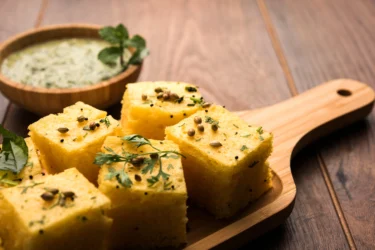

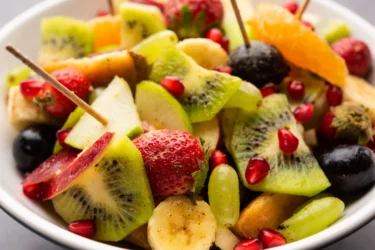
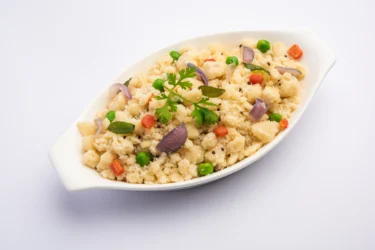
Remember to drink plenty of water throughout the day, and limit or avoid alcohol, sugary drinks, and processed foods. This meal plan is a suggested guideline for a fatty liver diet and should not be taken as medical advice.
It is recommended that you consult with a healthcare professional or a registered dietitian to create a personalized meal plan that meets your specific nutritional needs and dietary restrictions.
You can tailor it according to your diet, your specific needs and preferences, but try to focus on whole foods, lean protein sources, and plenty of fruits and vegetables while limiting your intake of processed foods, sugar, and unhealthy fats5.
Certain drugs can cause harm to the liver. If you are diagnosed with a fatty liver, it is important that you let your doctor be aware about the medicines you take. Some medicines can aggravate your liver condition and make the condition worse7.
Dr. Siddharth Gupta, B.A.M.S, M.D (Ayu)
Here are some tips to help manage fatty liver disease:
Also Read: Liver Fibrosis: What Is It, Causes, Symptoms & Treatment
Regular exercise, controlling diabetes, lowering cholesterol, and avoiding alcohol are other ways to manage fatty liver disease aside from diet.
The best treatment option for fatty liver disease depends on the underlying cause and severity of the condition and should be determined by a medical professional.
Fatty liver disease can be reversed in its early stages, but in more advanced cases, it can only be managed and not fully cured.
Yes, a vegetarian or vegan diet can help manage fatty liver disease. However, it is essential to ensure that you are still getting enough protein and other essential nutrients.
No, it is generally recommended to avoid alcohol altogether if you have fatty liver disease.
Disclaimer: The information provided here is for educational/awareness purposes only and is not intended to be a substitute for medical treatment by a healthcare professional and should not be relied upon to diagnose or treat any medical condition. The reader should consult a registered medical practitioner to determine the appropriateness of the information and before consuming any medication. PharmEasy does not provide any guarantee or warranty (express or implied) regarding the accuracy, adequacy, completeness, legality, reliability or usefulness of the information; and disclaims any liability arising thereof.
Links and product recommendations in the information provided here are advertisements of third-party products available on the website. PharmEasy does not make any representation on the accuracy or suitability of such products/services. Advertisements do not influence the editorial decisions or content. The information in this blog is subject to change without notice. The authors and administrators reserve the right to modify, add, or remove content without notification. It is your responsibility to review this disclaimer regularly for any changes.
चिया, जिसे सैल्विया हिस्पैनिका के नाम से भी जाना जाता है, लेमिएशिएइ परिवार से संबंधित एक जड़ी-बूटी वाला पौधा है। यह मूल रूप से उत्तरी ग्वाटेमाला और दक्षिणी मेक्सिको में पाया जाता है। यह पौधा बहुत से ड्राइड इनडेहिसेंट फ्रूट्स पैदा करता है, जिन्हें आमतौर पर सीड्स (बीज) कहा जाता है।1
आजकल चिया की खेती कोलंबिया, ऑस्ट्रेलिया, बोलीविया, पेरू, ग्वाटेमाला, मैक्सिको और अर्जेंटीना में की जाती है। पूर्व-कोलंबियाई लोग 16वीं शताब्दी में ताकत, ऊर्जा और स्टैमिना पाने के लिए चिया का सेवन करते थे। चिया सीड्स से तेल निकाला जाता है; इस तेल का उपयोग कॉस्मेटिक्स में किया जा सकता है। सांस की बीमारी से जुड़े इन्फेक्शन के लिए, इस पौधे की जड़ों, पत्तियों और शाखाओं सहित इसके अन्य भागों का आमतौर पर कम ही इस्तेमाल होता है।2
प्रति 100 ग्राम चिया सीड्स की न्यूट्रीशनल वैल्यू इस प्रकार है:3
| पोषक तत्त्व | प्रति 100 ग्राम कंटेंट |
| पानी | 5.8 g |
| कार्बोहाइड्रेट | 42.1 g |
| प्रोटीन | 16.5 g |
| फैट | 30.7 g |
| एनर्जी | 486 kcal |
| फाइबर | 34.4 g |
| आयरन | 7.72 mg |
| कैल्शियम | 631 mg |
| मैगनीशियम | 335 mg |
| सोडियम | 16 mg |
| पोटैशियम | 407 mg |
| फ़ॉस्फोरस | 860 mg |
| कॉपर | 0.924 mg |
| ज़िंक | 4.58 mg |
| मैंगनीज़ | 2.72 mg |
| सेलेनियम | 55.2 µg |
| विटामिन ए | 54 IU |
| विटामिन बी1 (थायमिन) | 0.62 mg |
| विटामिन बी2 (राइबोफ्लेविन) | 0.17 mg |
| विटामिन बी3 (नियासिन) | 8.83 mg |
| विटामिन बी9 (फोलेट) | 49 µg |
| विटामिन सी | 1.6 mg |
| विटामिन ई | 0.5 mg3 |
चिया सीड्स के शानदार उपयोग इन खूबियों की वजह से हो सकते हैं:
चिया सीड्स के शानदार उपयोग अलग-अलग स्थितियों के लिए फायदेमंद हो सकते हैं। हालांकि, इस बारे में अधिक शोध की आवश्यकता है कि मानव स्वास्थ्य के लिए चिया सीड्स कितने फायदेमंद हैं।
पशुओं में किए कुछ अध्ययनों से पता चला है कि चिया सीड्स टाइप 2 डायबिटीज़ पर लाभकारी प्रभाव डाल सकते हैं। Chicco et al. 2009 द्वारा पशुओं में किए एक अध्ययन में, चिया सीड्स ने आंतरिक फैटी टिशू और इंसुलिन रेजिस्टेंस को घटाया, यह दर्शाता है कि चिया सीड्स की लिपिड और ग्लूकोज़ होमियोस्टेसिस (संतुलन बनाए रखने) में भूमिका हो सकती है।4
यह जानकारी काफ़ी नहीं है क्योंकि ये अध्ययन जानवरों पर किए गए हैं। हालांकि, शरीर में ब्लड शुगर लेवल बनाए रखने में चिया सीड्स के ऐसे शानदार उपयोग को मंज़ूरी देने के लिए मनुष्यों पर अभी और अध्ययन की आवश्यकता है।
सूजन वाले रोगों में त्वचा लाल होना, दर्द और सूजन जैसे लक्षण होते हैं, जिससे ज़रूरी कामों में दिक्कत आ सकती है। ऐसा देखा गया है कि अपने आहार में चिया सीड्स ऑइल का उपयोग करने से प्रो-इन्फ्लेमेट्री एजेंटों (जो सूजन में शामिल होते हैं) के जोखिम को कम किया जा सकता है। इसलिए, ऐसा कहा जाता है कि चिया सीड्स ऑइल सूजन वाले रोगों को कम करने में लाभकारी हो सकता है।4
हालांकि यह जानकारी काफ़ी नहीं है और यह कहने के लिए और ज़्यादा वैज्ञानिक प्रमाण की आवश्यकता है कि चिया सीड्स सूजन वाले रोगों के लिए लाभकारी हैं।
रक्त में हाई-डेंसिटी लिपोप्रोटीन (एचडीएल) कोलेस्ट्रॉल (बैड कोलेस्ट्रॉल) का स्तर बढ़ा होने पर मनुष्यों में दिल के रोग हो सकते हैं। ऐसा माना जाता है कि चिया सीड्स का सेवन सीरम कोलेस्ट्रॉल के स्तर को कम कर सकता है, क्योंकि इसमें अनसैचुरेटेड ओमेगा -3 फैटी एसिड और डाइटरी फाइबर बहुत ज़्यादा होता है।2 इसलिए, चिया सीड्स दिल के रोगों से लड़ने में फायदेमंद हो सकते हैं। हालांकि, ऐसे दावों का समर्थन करने के लिए बड़े पैमाने पर शोध की आवश्यकता होगी।
हाई ब्लड प्रेशर और डिसलिपिडेमिया (खून में फैट या कोलेस्ट्रॉल का बढ़ा हुआ स्तर) दिल के रोगों के लिए बहुत बड़े जोखिम कारक हो सकते हैं। कुछ अध्ययनों से पता चला है कि चिया सीड्स में ब्लड प्रेशर और डिसलिपिडेमिया को मैनेज करने की क्षमता हो सकती है। जिन लोगों को हाई ब्लड प्रेशर था, चिया सीड का आटा खाने पर उनके ब्लड प्रेशर में कमी पाई गई। यह बड़ी मात्रा में फैटी एसिड मौजूद होने के कारण हो सकता है जिनमें एंटीइंफ्लेमेटरी और एंटीऑक्सीडेंट गुण होते हैं।2 यह जानकारी काफ़ी नहीं है और मनुष्यों में हाई ब्लड प्रेशर और डिसलिपिडेमिया का इलाज करने में चिया सीड्स के प्रभावों को अपनाने के लिए अभी और अध्ययन की आवश्यकता है।
चूंकि चिया सीड्स में कार्बोहाइड्रेट कम और डाइटरी फाइबर ज़्यादा होते हैं, इसलिए वे भूख लगने की इच्छा को कम कर सकते हैं और पेट ज़्यादा भरा लगता है (क्षमता से अधिक खाए जाने की स्थिति)। Grancieri et al. 2019 द्वारा एक समीक्षा रिपोर्ट से पता चलता है कि चिया सीड्स का सेवन करने से ज़्यादा वज़न और डायबिटीज़ के वयस्क रोगियों का वज़न कम हो सकता है, कमर का नाप कम हो सकता है और एडिपोनेक्टिन (एक प्रोटीन हार्मोन जो सूजन और रक्त में फैट के जमाव को कम करता है) बढ़ सकता है। इसके अलावा, ज़्यादा वज़न वाले और मोटे लोग भी चिया सीड्स खाकर वज़न और फैट कम कर सकते हैं।2 Lombardo et al. 2009 और Morato et al. 2015 द्वारा मानवों में किए गए एक अध्ययन में, एक महीने तक चिया सीड्स लेने के बाद कमर के नाप में अच्छी-खासी कमी देखी गई।4 हालांकि, यह जानकारी काफ़ी नहीं है और मनुष्यों में वज़न घटाने के प्रबंधन में चिया सीड्स के शानदार उपयोग का समर्थन करने के लिए इस विषय पर और अधिक शोध की आवश्यकता है।
हालांकि ऐसे अध्ययन हैं जो विभिन्न स्वास्थ्य स्थितियों में चिया सीड्स के लाभ दिखाते हैं, लेकिन यह जानकारी काफ़ी नहीं है। और इसलिए, मानव स्वास्थ्य पर चिया सीड्स किस हद तक लाभकारी हैं यह तय करने के लिए अभी और अध्ययन की आवश्यकता है। इसके अलावा, हर व्यक्ति इन हर्ब (जड़ी-बूटियों) के प्रति अलग-अलग प्रतिक्रिया दे सकता है। इसलिए, किसी भी स्वास्थ्य समय के लिए चिया सीड्स का उपयोग करने से पहले डॉक्टर से सलाह करना बहुत ज़रूरी है।
चिया सीड्स का उपयोग इस प्रकार किया जा सकता है:
चिया सीड्स से बने किसी भी हर्बल सप्लीमेंट को लेने से पहले लोग एक अनुभवी डॉक्टर से सलाह ज़रूर लें। हम आपको सलाह देते हैं कि किसी डॉक्टर या आयुर्वेदिक चिकित्सक से सलाह लिए बिना अपनी चल रही दवाओं को न तो बंद करें और न ही इसके बजाय कोई आयुर्वेदिक/हर्बल प्रिपरेशन लेना शुरू करें। वे आपके लिए दवा को सही रूप में और सही खुराक में लेने की सलाह देंगे।
हालांकि चिया सीड्स सुरक्षित होते हैं, लेकिन पेट से संबंधित कुछ साइड इफ़ेक्ट (सही से नहीं बताए गए) देखे गए हैं।5
इसलिए, अगर आप इस तरह के किसी भी साइड इफ़ेक्ट का अनुभव करते हैं, तो अपने डॉक्टर से फौरन मेडिकल हेल्प लें जिसने आपको यह दवा लेने की सलाह दी है। आपके लिए सही इलाज वही बता सकेंगे।
कम मात्रा में चिया सीड्स का सेवन सुरक्षित है। हालांकि, आम सावधानियां बरतने की आवश्यकता है।
प्राकृतिक उत्पाद साथ में लेने से वे आपके मौजूदा इलाज के साथ इंटरैक्शन कर सकते हैं, इसलिए आपको हमेशा अपने आयुर्वेदिक चिकित्सक को अपने मौजूदा इलाजों के बारे में बताना चाहिए और उनके द्वारा आपकी स्थिति में लाभ के लिए कोई प्राकृतिक उत्पाद वाली खुराक लिखने से पहले, उसके साइड इफेक्ट्स पर चर्चा करें।
चिया बीज आपके खाने में शामिल करने के लिए एक पौष्टिक विकल्प हैं। ये पाचन में मदद करते हैं और दिल को स्वस्थ रखने में फायदेमंद हैं। इनमें प्रोटीन, एंटीऑक्सीडेंट और कैल्शियम व मैग्नीशियम जैसे ज़रूरी मिनरल्स भी होते हैं। यही वजह है कि ये ऊर्जा बढ़ाने और पूरे शरीर के स्वास्थ्य को बेहतर बनाने में अच्छे साबित होते हैं।
चिया सीड्स से कई स्वास्थ्य लाभ हो सकते हैं। वे डायबिटीज़, हाई ब्लड प्रेशर, दिल के रोगों और मोटापे के लिए कारगर साबित हो सकते हैं। इनमें एंटी-कैंसर, एंटीऑक्सिडेंट और एंटी-इंफ्लेमेटरी गुण भी हो सकते हैं।2,4 हालांकि, किसी भी स्वास्थ्य स्थिति के लिए चिया सीड्स का उपयोग करने से पहले हमेशा डॉक्टर से सलाह ज़रूर लेनी चाहिए
Morato et al. 2015 द्वारा किए एक अध्ययन में, चिया सीड्स ने ज़्यादा वज़न वाले और मोटे लोगों में शरीर के वज़न और फैट को कम किया। चिया सीड्स में कार्बोहाइड्रेट कम और डाइटरी फाइबर ज़्यादा होते हैं, इसलिए वे भूख लगने की इच्छा को कम कर सकते हैं और पेट ज़्यादा भरा लगता है।2 इसलिए, वज़न कम करने में ये आपको फायदा पहुंचा सकते हैं। हालाँकि, इस दावे को पुख्ता करने के लिए मनुष्यों पर अभी और अध्ययन की आवश्यकता है।
चिया सीड्स डायबिटीज़ के लिए लाभकारी हो सकते हैं। कुछ पशु और मानव अध्ययनों में पाया गया कि चिया सीड्स डायबिटीज़ को नियंत्रित करने में बहुत असरदार हो सकते हैं।4 जानवरों में, चिया सीड्स ने आंतरिक फैटी टिशू और इंसुलिन रेजिस्टेंस को घटाया और चिया सीड्स की लिपिड और ग्लूकोज़ लेवल का संतुलन बनाए रखने में भूमिका हो सकती है।4 हालांकि, यह जानकारी काफ़ी नहीं है और इस दावे को पुख्ता करने के लिए मानवों में और ज़्यादा अध्ययन की आवश्यकता है।
गर्भावस्था के दौरान चिया सीड्स के सुरक्षित उपयोग के बारे में उपलब्ध डेटा काफ़ी नहीं है। इसलिए, गर्भावस्था के दौरान चिया सीड्स लेने से पहले अपने डॉक्टर से सलाह लें।
हाँ, चिया सीड्स में कई पोषक तत्व होते हैं, जिनमें कार्बोहाइड्रेट, प्रोटीन, फैट, फाइबर, एनर्जी, आयरन, कैल्शियम, मैग्नीशियम, सोडियम, पोटेशियम, फ़ॉस्फोरस, कॉपर, ज़िंक, मैंगनीज़, सेलेनियम, विटामिन ए, बी1, बी2, बी3, बी9, सी, और ई शामिल हैं।3
हाँ, चिया सीड्स से एलर्जी हो सकती है। जिन लोगों को सरसों और तिल से एलर्जी है उन्हें चिया सीड्स नहीं लेने चाहिए।5
आप चिया सीड्स को साबुत, बीज का तेल, बीज का आटा, शाखाओं, जड़ों या पत्तियों के रूप में उपयोग कर सकते हैं।1,2
1. De Falco B, Amato M, Lanzotti V. Chia seeds products: an overview. Phytochem Rev. 2017;16(4):745–60. Available at: https://www.researchgate.net/publication/316994147_Chia_seeds_products_an_overview
2. Grancieri M, Martino HSD, Gonzalez de Mejia E. Chia Seed (Salvia hispanica L.) as a Source of Proteins and Bioactive Peptides with Health Benefits: A Review. Compr Rev Food Sci Food Saf. 2019;18(2):480–99. Available at: https://pubmed.ncbi.nlm.nih.gov/33336944/
3. Restivo J. Chia seed benefits: What you need to know [Internet]. Harvard Health; 2024 [cited 2025 Feb 4]. Available from: https://www.health.harvard.edu/nutrition/chia-seed-benefits-what-you-need-to-know
4. Ulbricht C, Chao W, Nummy K, Rusie E, Tanguay-Colucci S, Iannuzzi C, et al. Chia (Salvia hispanica): A Systematic Review by the Natural Standard Research Collaboration. Rev Recent Clin Trials. 2009;4(3):168–74. Available at: https://pubmed.ncbi.nlm.nih.gov/20028328/
5. Dietary chia seed (Salvia hispanica L.) rich in α-linolenic acid improves adiposity and normalises hypertriacylglycerolaemia and insulin resistance in dyslipaemic rats. [cited 2025 Feb 4]. Available at: https://www.cambridge.org/core/journals/british-journal-of-nutrition/article/dietary-chia-seed-salvia-hispanica-l-rich-in-linolenic-acid-improves-adiposity-and-normalises-hypertriacylglycerolaemia-and-insulin-resistance-in-dyslipaemic-rats/9B9047EBE0643F49D68AD61EF00CD02D
6. Dickens B, Sassanpour M, Bischoff EL. The effect of chia seeds on high-density lipoprotein (HDL) cholesterol. Cureus. 2023 Jun 13 [cited 2025 Feb 25]. Available from: https://pmc.ncbi.nlm.nih.gov/articles/PMC10339661/#ref-list1
7. Da Silva Marineli R, Moura CS, Moraes ÉA, Lenquiste SA, Lollo PCB, Morato PN, et al. Chia (Salvia hispanica L.) enhances HSP, PGC-1α expressions and improves glucose tolerance in diet-induced obese rats. Nutrition. 2014 Dec 20 [cited 2025 Feb 25]. Available from: https://pubmed.ncbi.nlm.nih.gov/25837222/
8. Ullah R, Nadeem M, Khalique A, Imran M, Mehmood S, Javid A, et al. Nutritional and therapeutic perspectives of Chia (Salvia hispanica L.): A review. Journal of Food Science and Technology. 2015 Oct 1 [cited 2025 Feb 25]. Available from: https://pmc.ncbi.nlm.nih.gov/articles/PMC4926888/
9. Toscano LT, Da Silva CSO, Toscano LT, De Almeida AEM, Da Cruz Santos A, Silva AS. Chia flour supplementation reduces blood pressure in hypertensive subjects. Plant Foods for Human Nutrition. 2014 Nov 18 [cited 2025 Feb 25]. Available from: https://pubmed.ncbi.nlm.nih.gov/25403867/
10. Chia seed (Salvia hispanica L.) supplementation to the diet of adults with type 2 diabetes improved systolic blood pressure: A randomized controlled trial. Available from: https://pubmed.ncbi.nlm.nih.gov/33530854/
Disclaimer: The information provided here is for educational/awareness purposes only and is not intended to be a substitute for medical treatment by a healthcare professional and should not be relied upon to diagnose or treat any medical condition. The reader should consult a registered medical practitioner to determine the appropriateness of the information and before consuming any medication. PharmEasy does not provide any guarantee or warranty (express or implied) regarding the accuracy, adequacy, completeness, legality, reliability, or usefulness of the information; and disclaims any liability arising thereof.
The mandarin orange species of the family Rutaceae includes the small, thin-skinned form of orange known as the tangerine (Citrus reticulata). Tangerine culture originated in Southeast Asia and travelled west through trade routes all the way to the Mediterranean1. The fruit is grown in both the Old World and the New World’s subtropical regions, mainly southern Europe and the southern United States. The pulp is soft, juicy and flavorful with plenty of vitamin C. Many flavourings and liqueurs use the oil derived from the tangerine’s fragrant skin as a distinctive ingredient.
A medium-sized tangerine with a diameter of around 2/12 inches weighs roughly 88 gm and contains the following2:
Tangerines provide the following health advantages:
Tangerines are a great source of dietary fibre for people and are packed with vitamin C.

Tangerines and their peels are abundant in flavonoids and vitamin C, two antioxidants that guard against a wide range of ailments3. By counteracting the harmful effects of oxidative stress, which is brought on by the buildup of free radicals, antioxidants defend your body against damage. These hazardous compounds contribute to the emergence of chronic diseases like cancer, arthritis and heart disease.
Tangerine is one of the citrus fruits like oranges, lemons, and grapefruits. Much like other members of its family, it is high in vitamin C. Vitamin C is a powerful antioxidant and might be beneficial for eye health. Thus, including citrus fruits in your diet regularly is highly recommended6.
Dr. Siddharth Gupta, B.A.M.S, M.D (Ayu)

Tangerine excellent status as a food high in antioxidants is one of the best things about tangerine fruit. Antioxidants are potent substances that work to counteract the harm done to the body by free radicals, lowering the risk of inflammation and chronic diseases like cancer, diabetes and heart disease. According to research4, tangerines are a great source of naringin, naringenin, nobiletin, narirutin and hesperidin, as well as other antioxidant components. Moreover, tangerines contain a lot of vitamin C, a water-soluble vitamin that functions as an antioxidant to shield cells from oxidative damage.

According to experts, persons with type 2 diabetes may benefit from the antioxidants found in citrus fruits like tangerines. Researchers of a study5 noted in a publication that people with type 2 diabetes have decreased levels of antioxidant vitamins and enzymes. Patients with type 2 diabetes and other inflammatory disorders may experience less oxidative stress by consuming antioxidant-rich fruits like tangerines or fruit extracts.

The high vitamin C concentration of tangerines, which delivers more than 25% of your daily needs in just one fruit, is responsible for the majority of your health advantages. In addition to aiding in the absorption of iron and warding off infections, vitamin C is a strong antioxidant that protects your cells from stress-related cellular damage and ageing.
Based on some studies7, Tangerine might aid in the improvement of sleep quality, mood enhancement and cognitive functions.
Dr. Rajeev Singh, BAMS
Tangerines is a juicy fruit with tremendous health benefits. They can be used as
Tangerines can be combined with chocolate and walnuts for a refreshing take on summer cakes. They are delicious and can be eaten as a dessert on sultry summer afternoons. Tangerines can also be coated or dipped in melted chocolate to make a sweet snack for kids. Tangerines also go really well with caramels, marshmallows and other sweet ingredients. Meat products like spiced ham can be marinated using the tangerine sauce for a juicy and refreshing flavour.
Despite the fact that tangerines are extremely healthy and advantageous, it is advisable to consume them in moderation. Tangerines have reportedly caused allergy reactions in some people under specific circumstances. Hence, inform your healthcare practitioner right away if you develop any of these side effects or any adverse responses after eating tangerines.
Abdominal pains and diarrhoea are two gastrointestinal problems that may result from overeating tangerines. They might also conflict with liver-related drugs. Despite being nutritious, eating more tangerines than advised could be harmful to your health. Before consuming tangerines, check with your doctor if you are taking medicine for your liver.
Oranges and tangerines are both fruits that belong to the citrus family. However, they are not the same. While oranges might provide more vitamin C and fibre per serving, tangerines seem to be a richer source of vitamin A. Although tangerines tend to be more reddish-orange than most orange varieties, they share a similar hue. Compared to tangerines, oranges are bigger and rounder. Either kind may have seeds or not. Tangerines are more reddish-orange than most orange kinds, which are typically yellowish-orange.
Tangerines have few calories and no fat, but they are a great source of fibre, vitamins and minerals. An average-sized tangerine has 50 calories and 13 grams of carbohydrates, 9 grams of which are natural sugars. Just under 50% of your daily vitamin C needs and approximately 10% of your daily fibre requirements are provided by one tangerine.
Tangerines have high levels of vitamin C, a powerful antioxidant that fights free radical damage and reduces inflammation. Tangerines allow your body to absorb iron from your diet. They can aid in the healing of small wounds and cuts. Pectin and hemicellulose, two fibres found in tangerines, limit the absorption of cholesterol in the intestine and reduce the risk of obesity. Tangerines’ fibre helps with constipation and enhances digestion. Vitamin A, which is abundant in tangerines and aids in tissue repair, may also lessen the appearance of age-related signs of ageing such as fine lines, wrinkles and dull skin.
In ancient native China and Japan, mandarins have been grown for more than three thousand years. They were given that name because orange-robed Chinese aristocrats wore them. The fruit was first transported to Europe and the Americas in the 1800s through Tangiers in Morocco, hence the name of the fruit.
Tangerines and oranges come in a variety of flavours, although each fruit’s flavour is mostly influenced by its type. Oranges and tangerines both come in sweet and sour varieties. The majority of tangerines, however, are sweeter and less tart than oranges. Additionally, tangerines typically have a shorter aftertaste and a more robust flavour profile than oranges.
1. Mabberley DJ. Citrus (Rutaceae): a review of recent advances in etymology, systematics and medical applications. Blumea. 2004;49(2‑3):481–498. doi:10.3767/000651904X484432. Available from: https://www.researchgate.net/publication/233545464_Citrus_Rutaceae_A_Review_of_Recent_Advances_in_Etymology_Systematics_and_Medical_Applications
2. U.S. Food and Drug Administration. Raw Fruits Poster — Fruits Nutrition Facts (Raw, Edible Weight Portion). Raw Fruits Poster (Text Version / Accessible Version) [Internet]. [cited 2025 Dec 04]. Available from: https://www.fda.gov/food/nutrition-food-labeling-and-critical-foods/raw-fruits-poster-text-version-accessible-version
3. Shi M, Guo Q, Xiao Z, Sarengaowa, Xiao Y, Feng K. Recent Advances in the Health Benefits and Application of Tangerine Peel (Citri Reticulatae Pericarpium): A Review. Foods. 2024 Jun 23;13(13):1978. doi: 10.3390/foods13131978. PMID: 38998484; PMCID: PMC11241192. Available from: https://pmc.ncbi.nlm.nih.gov/articles/PMC11241192/
4. Alam MA, Subhan N, Rahman MM, Uddin SJ, Reza HM, Sarker SD. Effect of citrus flavonoids, naringin and naringenin, on metabolic syndrome and their mechanisms of action. Adv Nutr. 2014 Jul 14;5(4):404-17. doi: 10.3945/an.113.005603. PMID: 25022990; PMCID: PMC4085189. Available from: https://pmc.ncbi.nlm.nih.gov/articles/PMC4085189/
5. Visvanathan R, Williamson G. Effect of citrus fruit and juice consumption on risk of developing type 2 diabetes: Evidence on polyphenols from epidemiological and intervention studies. Trends in Food Science & Technology. 2021;115:133‑146. doi:10.1016/j.tifs.2021.06.038. Available from: https://www.sciencedirect.com/science/article/pii/S092422442100412X
6. American Academy of Ophthalmology. Four Fantastic Foods to Keep Your Eyes Healthy. AAO Eye Health News [Internet]. 2012 May 03 [cited 2025 Dec 04]. Available from: https://www.aao.org/eye-health/news/four-fantastic-foods
7. Chandharakool S, Koomhin P, Sinlapasorn J, Suanjan S, Phungsai J, Suttipromma N, Songsamoe S, Matan N, Sattayakhom A. Effects of Tangerine Essential Oil on Brain Waves, Moods, and Sleep Onset Latency. Molecules. 2020 Oct 21;25(20):4865. doi: 10.3390/molecules25204865. PMID: 33096890; PMCID: PMC7587980. Available from: https://pmc.ncbi.nlm.nih.gov/articles/PMC7587980/
Disclaimer: The information provided here is for educational/awareness purposes only and is not intended to be a substitute for medical treatment by a healthcare professional and should not be relied upon to diagnose or treat any medical condition. The reader should consult a registered medical practitioner to determine the appropriateness of the information and before consuming any medication. PharmEasy does not provide any guarantee or warranty (express or implied) regarding the accuracy, adequacy, completeness, legality, reliability or usefulness of the information; and disclaims any liability arising thereof.
Links and product recommendations in the information provided here are advertisements of third-party products available on the website. PharmEasy does not make any representation on the accuracy or suitability of such products/services. Advertisements do not influence the editorial decisions or content. The information in this blog is subject to change without notice. The authors and administrators reserve the right to modify, add, or remove content without notification. It is your responsibility to review this disclaimer regularly for any changes.
From religious ceremonies to mouth-fresheners, ‘paan supari’ has been an inseparable combination. We know a lot about the ‘paan’ leaves, but not enough attention has been given to ‘supari’ or betel nuts. Betel nuts are the seeds of the fruits of palm trees, which are mostly cultivated in eastern countries like Bangladesh, India, Malaya, Ceylon, Philippines and Japan. The scientific name of betel nut is Areca cattechu Linn. It is commonly known as Areca nut1. In this article, we will learn all that you might want to know about betel nuts, including their health benefits, side effects and precautions, to name a few.
Betel nuts are rich in a variety of compounds, like carbohydrates, proteins, fibres, minerals like calcium, copper, phosphorus, and iron and Vitamins like Vitamin B6 and C3. Betel nuts are also rich in phytochemicals, which have a high medicinal value. The phytochemicals present in betel nuts include alkaloids like arecoline, guvacoline, guvacine, arecaidine and polyphenols, which mostly include flavonoids like leucocyanidins, catechins, epicatechin and tannins. Here are the Nutritional components of betel nuts with their percentage values:
Betel nuts are also rich in phytochemicals, which have a high medicinal value. The phytochemicals present in betel nuts include alkaloids like arecoline, guvacoline, guvacine, arecaidine and polyphenols, which mostly include flavonoids like leucocyanidins, catechins, epicatechin and tannins4. Here are the phytochemical components of betel nuts with their percentage values:
Betel nuts show numerous scientifically proven properties, some of which are mentioned below:
Some of the health benefits of betel nuts for overall health are:
Literature studies16 support that the consumption of nuts may help manage blood glucose. Musdja et al. conducted a study7 in 2021. The findings of this study showed that betel nut consumption in diabetic rats helped in reducing blood glucose. This effect is attributed to the presence of alkaloids like arecoline and guvacoline. This indicates that betel nuts have the potential to reduce blood glucose and thus may help manage diabetes. However, to claim these results in humans, we need more studies. It is further advised not to self-medicate and to consult your physician for proper management of abnormal blood glucose.
Literature studies state that exercising regularly and following a healthy diet consisting of fruits, vegetables, and nuts may have a positive impact on blood pressure. A study4 conducted by Chen et al. in 2021 stated that betel nuts might improve blood circulation and help in reducing high blood pressure. The exact mechanism behind this effect is not known. Therefore, it is advised not to rely on betel nuts as a remedy, and kindly consult your physician for the proper management of hypertension.
A lipid profile is a complete cholesterol test which measures total cholesterol, triglycerides, low-density lipoprotein (LDL), high-density lipoprotein (HDL), etc. Peng et al. in 2015 conducted a review8, and the summary estimates of this review state that betel nuts may help in lowering elevated lipid levels. However, we need more studies to claim these results with greater reliability. Also, it is advised not to consider the consumption of betel nuts as an alternative to modern medicine; you should always consult your doctor for proper management of an abnormal lipid profile.
An infection occurs when germs like bacteria, viruses, fungi or parasites invade the body. Ayurveda, or the Indian system of medicine, helps support the use of household remedies for managing infections. A review9 conducted by Peng et al. in 2015 stated that betel nuts might help inhibit the growth of bacteria, viruses, fungi and parasites like tapeworms and ringworms. This effect is due to the presence of polyphenols and alkaloids in betel nuts. This indicates that these nuts may have the potential to manage infections. However, you should not consider these nuts as an alternative to medicines; it is always advised to consult a physician for proper management of any infection.
Literature studies support the use of betel nuts in reducing allergies. A study10 conducted in 2015, the summary states that betel nuts may have the potential to manage skin irritation and provide relief from allergies. The exact mechanism behind these effects is unknown; however, it can help reduce inflammation. It is advised to take a professional opinion for the proper treatment of any allergy or skin irritation. You should not consider betel nuts as an alternative to modern medicine.
According to studies11, arecoline, which is an alkaloid present in betel nuts, increases the secretion of human saliva and increases the contractions of the digestive system, which helps improve digestion. Traditionally, they have been used for managing constipation. Therefore, betel nuts may positively impact the digestive system. To claim these results with greater reliability, we need more studies. It is further advised not to consider these nuts as an alternative to modern medicine; kindly consult your doctor for proper management of any digestive disorder.
Though there are studies that show the benefits of betel nuts in various conditions, these are insufficient, and there is a need for further studies to establish the true extent of the benefits of betel nuts on human health.
You must consult a qualified doctor before consuming any herbal supplements. You should not discontinue or replace your ongoing treatment of modern medicine with an ayurvedic/herbal preparation without consulting your doctor.
Also Read: Masoor Dal: Uses, Benefits, Nutritional Value & more!
Liu et al. conducted a study in 201313, which found that commonly reported side effects of betel nuts include nausea, vomiting, dizziness and abdominal pain. A study17 in 2021 stated that betel nuts contain arecoline alkaloid; if consumed in larger amounts, it can be poisonous and may increase the risk of cancer.
However, if you experience any adverse reactions to betel nuts, it is advised to discontinue their intake and immediately contact a doctor or your Ayurvedic physician who has prescribed it, as they will guide you properly for your symptoms.
Also Read: Kayam Churna: Uses, Benefits, Side Effects and More
Consuming betel nuts is okay if taken in moderate amounts. However, the following considerations must be taken:
You may become addicted to betel nut chewing, watch out for symptoms of anxiety, insomnia and mood swings14. If you face these complaints, it is likely that you’re facing betel nut addiction. Consult your doctor for proper advice on betel nut withdrawal.
Consumption of betel nuts is contraindicated in people with:
Also Read: Kanchanar Guggulu: Benefits, Side Effects, Precautions & More!
However, you must always seek the advice of your Ayurvedic physician about the possible interaction of betel nuts with other drugs.
Betel nuts are the seeds of the fruits of palm trees which are mostly cultivated in eastern countries like Bangladesh, India, Malaya, Ceylon, Philippines and Japan1.
In Hindi, betel nuts are called supari.
No, there are no proven results on the effects of betel nuts on hair loss.
The safety of betel nut consumption during pregnancy is not well-established; it is therefore advised to avoid its use and consult your doctor for the same.
Disclaimer: The information provided here is for educational/awareness purposes only and is not intended to be a substitute for medical treatment by a healthcare professional and should not be relied upon to diagnose or treat any medical condition. The reader should consult a registered medical practitioner to determine the appropriateness of the information and before consuming any medication. PharmEasy does not provide any guarantee or warranty (express or implied) regarding the accuracy, adequacy, completeness, legality, reliability or usefulness of the information; and disclaims any liability arising thereof.
We all know about yoga and pranayama, but did you know about mudra science? Mudra science is an ancient science known to connect energies called vata (energy of movement), kapha (energy of lubrication), and pitta (energy of digestion). Mudras are known to be a means for the expression of internal feelings by the use of different gestures involving the hands, feet, and other parts of the body. Out of the five categories of mudras, hasta mudra, or hand gestures are known to have potential benefits on mental, physical, and emotional well-being. In this article, we will explore the health benefits of one such mudra, agni mudra1.
Agni mudra belongs to the hasta or the hand mudra category and is the most commonly practiced hasta mudra. It is also known as Surya mudra or the gesture of the sun. The name agni mudra comes from the Sanskrit word ‘agni’, which means fire, and ‘mudra’ means a seal lock or hand gesture. The practice of this mudra is known to eliminate the earth (Prithvi) element and increase the fire element (agni) present in the body2 .
Let us learn how to do agni mudra 2:
Note: Close your eyes and breathe normally, and perform this mudra daily for 45 minutes at a stretch or for 15 minutes three times a day. It is best to practice this mudra on an empty stomach in the morning.
Did you know?
Keeping the origin and history in mind, let us now discuss the benefits of agni mudra.
The thyroid gland is a small gland located at the front of your neck that is responsible for the production of the thyroid hormone, which plays an important role in growth, development, and metabolic processes. Kumar et al. conducted a study2 in 2022 proving that the practice of agni mudra may have a positive impact on thyroid function. However, the practice of this mudra should not be considered an alternative to modern medicine. So, consult your doctor for proper treatment of any thyroid disorder and do not rely on this mudra alone. Additionally, one should practice agni mudra under the supervision of a qualified trainer3.
Diabetes is one of the most common diseases affecting individuals globally. With this change, people now realize that in addition to medicines, diet and exercise may help manage diabetes. A study3 carried out by Raveendran et al. in 2018 explained that the practice of agni mudra, along with other mudras, may be effective in reducing blood glucose levels and managing diabetes. However, you should not consider the practice of this mudra as an alternative to modern medicine. You should consult your doctor for proper management of diabetes. Additionally, the practice of this mudra should be done strictly under the guidance of a qualified trainer4.
Literature shows that the practice of asanas, pranayamas, and mudras may positively impact mental health. A study6 conducted by Mukhopadhyay et al. in 2021 stated that agni mudra may help reduce stress and tension and may improve emotional and social well-being. This may help positively impact mental health. However, you should not rely on this mudra alone and consult your doctor for proper treatment of depression. Additionally, the practice of this mudra should be carried out under the guidance of a qualified trainer2.
As per studies, agni mudra is associated with the heating element of the body and is known to dissolve extra fat in the body; thus, it positively impacts obesity. Mukhopadhyay et al. 2021 conducted a study6 where it was found that the practice of agni mudra may help in weight loss and, thus, help manage obesity. The practice of this mudra should not be considered an alternative to modern medicine. So, consult your doctor for proper management of obesity and do not rely on this mudra alone. Additionally, one should practice agni mudra under the supervision of a qualified trainer3.
Literature studies support that the practice of yoga asanas, pranayamas, and mudras may positively impact cholesterol and, thus, reduce the risk of developing heart diseases. Kumar et al. conducted a study2 in 2022 that stated that the practice of agni mudra might help in lowering LDL or bad cholesterol. Even then, the practice of this mudra should not be considered as an alternative to modern medicine. You should consult your doctor for proper management of high cholesterol. Further, it is advised to practice agni mudra under the guidance of a qualified trainer3.
Research shows that the practice of yoga asanas, pranayamas, and mudras may have a positive impact on fever and seasonal flu. Kumar et al. in 2022 conducted a study2 showing that the practice of agni mudra may help manage fever. As the practice of this mudra is known to increase the fire element in the body, it is believed that this effect may have a positive impact on fever. Additionally, this mudra may help manage flu symptoms. However, the practice of this mudra should not be considered an alternative to modern medicine, and this mudra should be practised under the guidance of a qualified trainer3.
Note- The benefits of agni mudra are studied in a limited human population. Still, more research is needed to claim the positive effects of agni mudra.
Although the practice of yoga asanas, pranayamas, and mudras may help in the development of the mind and body, you should not consider them as an alternative to modern medicine. It is advised not to rely on mudras alone to treat any condition. Kindly consult a qualified doctor for proper treatment. Additionally, any mudra practice should be done under the supervision of a qualified trainer.
From my experience, the practice of Agni Mudra might have positive effects on body temperature regulation. When combined with Surya Namaskar (Sun Salutation) during winter or in other cold conditions, Agni Mudra may help maintain body temperature and lessen shivering6.
Dr. Siddharth Gupta, B.A.M.S, M.D (Ayu)
Also Read: Benefits of Adho Mukha Svanasana (Downward Facing Dog) and How to Do it
The precautions and contraindications of asanas should also be kept in consideration when performing mudras. Cautions need to be taken when performing agni mudra5:
In people with pitta dosha (agni or fire dominant) and Kapha dosha (Prithvi or earth dominant), caution needs to be taken as agni mudra increases the fire element and decreases the earth element in the body.
The contraindications of agni mudra are listed below5:
Note: It is best to consult your Ayurvedic physician for possible foods that may increase the level of agni in your body. It will be best to avoid the consumption of these foods while practicing agni mudra. Additionally, consult your physician to know about the nature of your body, also known as ‘Prakriti’.
In my experience, I have noticed that Agni Mudra might help provide relief from various issues caused by cold weather. It may help alleviate symptoms such as dry skin, sore throat, and even painful joints1.
Dr. Rajeev Singh, BAMS
Agni mudra belongs to the hasta or the hand mudra category and is also known as Surya mudra as the sun signifies fiery energy. The name agni mudra comes from the Sanskrit word ‘agni’ which means fire, and mudra means a seal lock or hand gesture. The practice of this mudra is known to eliminate the earth (prithvi) element and increase the fire element (agni) present in the body. The practice of this mudra may help in exerting a positive impact on depression, diabetes, thyroid gland, cholesterol, obesity, fever, and constipation.
Also Read: Benefits of Ardha Matsyendrasana (Half Fish Pose) and How to Do it By Dr. Himani Bisht
Agni mudra belongs to the hasta or the hand mudra category2.
The name agni mudra comes from the Sanskrit word ‘agni’, which means fire and ‘mudra’ means a seal lock or hand gesture2.
The practice of this mudra may help in exerting a positive impact on diabetes, depression, obesity, fever, thyroid gland, fever and cholesterol2,4.
There is limited information regarding the safety of agni mudra during pregnancy. It is therefore advised to consult your doctor for proper guidance.
Agni mudra is also known as agni vardhak mudra as it is known to increase the ‘agni’ (fire) element in the body2.
1. Sunitha S, CP S. Mudra therapy and its classification. International Journal of Health Sciences and Research (IJHSR). 2021; 11(1):118-26. Available at: https://www.ijhsr.org/IJHSR_Vol.11_Issue.1_Jan2021/IJHSR16.pdf
2. Kumar SN, Venu A, Jaya MH. Effect of yoga mudras in improving the health of users: A precautionary measure practice in daily life for resisting the deadly COVID-19 disease. In Lessons from COVID-19 2022 Jan 1 (pp. 41-59). Academic Press. Available at: https://www.ncbi.nlm.nih.gov/pmc/articles/PMC9347266/
3. Raveendran AV, Deshpandae A, Joshi SR. Therapeutic role of yoga in type 2 diabetes. Endocrinology and Metabolism. 2018 Sep 1; 33(3):307-17. Available at: https://www.ncbi.nlm.nih.gov/pmc/articles/PMC6145966/
4. AYUSH Ministry, Government of India. Yoga Do’s & Don’ts by AYUSH Ministry [Internet].Available from: https://www.scribd.com/document/725756281/Yoga-do-dont-by-ayush-ministry
5. Shilpa S, Murthy CV. Understanding personality from Ayurvedic perspective for psychological assessment: A case. Ayu. 2011 Jan; 32(1):12. Available at: https://www.ncbi.nlm.nih.gov/pmc/articles/PMC3215408/
6. Mukhopadhyay K. Bandha (Inner Lock)-Mudra (Hand Gesture): Essences of Optimizing Health. Int J Adv Res Sci Commun Technol (IJARSCT). 2021 Nov;11(1):293-308. DOI: 10.48175/IJARSCT-2124. Available from: https://ijarsct.co.in/Paper2124.pdf
Disclaimer: The information provided here is for educational/awareness purposes only and is not intended to be a substitute for medical treatment by a healthcare professional and should not be relied upon to diagnose or treat any medical condition. The reader should consult a registered medical practitioner to determine the appropriateness of the information before consuming any medication. PharmEasy does not provide any guarantee or warranty (express or implied) regarding the accuracy, adequacy, completeness, legality, reliability, or usefulness of the information; and disclaims any liability arising thereof.
Links and product recommendations in the information provided here are advertisements of third-party products available on the website. PharmEasy does not make any representation of the accuracy or suitability of such products/services. Advertisements do not influence the editorial decisions or content. The information in this blog is subject to change without notice. The authors and administrators reserve the right to modify, add, or remove content without notification. It is your responsibility to review this disclaimer regularly for any changes.
In yoga, ‘mudras’ are believed to be the gateway to the storehouse of magnetic energy. A ‘mudra’ is a hand gesture or posture that has a specific pattern of fingers. As per Ayurveda, the human body is made of five elements, namely earth, water, fire, space, and wind. Likewise, the five fingers of our hands are known to represent these five elements: the thumb represents fire, the forefinger represents wind, the middle finger symbolizes space, the ring finger symbolizes the Earth, and the little finger represents water. During the practice of mudras, when we apply pressure to the tips of the fingers, it results in the activation of certain regions in the brain and offers numerous health benefits. In this article, we will explore the health benefits of one such mudra, Rudra Mudra1,2.
Rudra mudra belongs to the ‘hasta’ or the hand ‘mudra’ category and is believed to have a powerful healing effect. The name rudra mudra comes from the Sanskrit word ‘rudra’, which is another name for Lord Shiva, and ‘mudra’ means a seal lock or hand gesture. It is a mudra dedicated to Lord Shiva and involves the thumb, index, and ring fingers that symbolize fire, air, and earth elements of the body3.
Note: It is best to practice any mudra with a relaxed mind, closed eyes, and a normal breathing pattern.
Did You know?
Let us learn how to do the Rudra mudra3:
If you’re seeking to enhance your concentration, I would suggest considering the practice of Rudra Mudra. This mudra is believed to be potentially beneficial in improving focus and concentration6.
Dr. Siddharth Gupta, B.A.M.S, M.D (Ayu)
Keeping the origin and history in mind, let us now discuss the benefits of Rudra Mudra.
A sedentary lifestyle and unhealthy diets may increase the risk of hypertension. Literature studies have shown that eating a healthy diet, exercising, and doing yoga may help in managing blood pressure along with proper treatment. Nagarajan et al. conducted a study3 in 2017 that brought to light that the practice of rudra mudra, along with other mudras, helped in reducing blood pressure. Thus, the practice of rudra mudra may positively impact hypertension, but the practice of this mudra should not be considered an alternative to modern medicine. So, consult your doctor for proper treatment of hypertension and do not rely on this mudra alone. Additionally, one should practice rudra mudra under the supervision of a qualified trainer3.
Obesity, which has now become a lifestyle disorder, is characterized by excessive fat accumulation and an excessive increase in body weight. Literature studies state that the practice of asanas, mudras, and pranayamas may have a positive impact on health. A study3 conducted by Nagarajan et al. in 2017 explained that the practice of rudra mudra, along with other mudras, may be effective in reducing body weight and managing obesity. Additionally, the practice of this mudra may improve the metabolism of food and digestion by stimulating the manipura chakra. However, you should not consider the practice of this mudra as an alternative to modern medicine. You should consult your doctor for proper management of obesity3.
Depression is a mood disorder that is characterized by a feeling of sadness and loss of interest, which can affect daily activities. Literature studies show that the practice of asanas, pranayamas, and mudras may positively impact depression. Umesh Yadav, a Yogacharya at Jawaharlal Nehru University in 2021, stated8 that Rudra Mudra may help reduce stress and anxiety; this indicates that Rudra Mudra may have the potential to manage depression; however, you should not rely on this mudra alone and consult your doctor for proper treatment. Additionally, the practice of this mudra should be carried out under the guidance of a qualified trainer4.
Type II diabetes is characterized by increased blood glucose levels due to a deficiency or resistance to the insulin hormone, which is known to regulate blood glucose. Raveendran et al., in 2018, conducted a study4 that stated that the practice of hasta mudras may help reduce blood glucose levels and help manage type-II diabetes. Thus, the practice of rudra mudra may have the potential to show similar effects, but the practice of this mudra should not be considered an alternative to modern medicine. So, consult your doctor for proper treatment of Type-II diabetes and do not rely on this mudra alone. Additionally, one should practice rudra mudra under the supervision of a qualified trainer5.
Faulty postures and being inactive for long periods have increased the frequency of neck and back pain episodes. Literature studies support the practice of yoga asanas, pranayamas, and mudras, which may help in alleviating neck and back pain. Nagarajan et al. conducted a study3 in 2017 that stated that the practice of Rudra mudra may help manage neck and back pain, but the practice of this mudra should not be considered an alternative to modern medicine. You should consult your doctor for proper treatment of chronic neck and back pain. Further, it is advised to practice Rudra mudra under the guidance of a qualified trainer3.
Note- The benefits of rudra mudra are studied in a limited human population. Still, more research is needed to claim the positive effects of rudra mudra.
Rudra Mudra is a hand gesture that I often recommended for enhancing eyesight. Practising this mudra might have a positive impact on vision and may help improve eyesight over time when done consistently6.
Dr. Rajeev Singh, BAMS
Although the practice of yoga asanas, pranayamas, and mudras may help in the development of the mind and body, you should not consider them as an alternative to modern medicine. It is advised not to rely on mudras alone to treat any condition. Kindly consult a qualified doctor for proper treatment. Additionally, any mudra practice should be done under the supervision of a qualified trainer.
From my understanding, I have come to learn that practising Rudra Mudra might be beneficial in reducing cholesterol levels. It’s worth trying as a natural approach to boost your cardiovascular health7.
Dr. Smita Barode, B.A.M.S, M.S.
As mudras are practised along with yogasanas, the cautions that need to be taken during the practice of asanas should also be kept in consideration when performing mudras. Cautions need to be taken in the mentioned scenarios when performing rudra mudra:
As any mudra is practised along with yogasanas, the contraindications of yoga asanas will also apply to the practice of mudras. The following are the contraindications of rudra mudra:
Also Read: Benefits of Bhujangasana and How to Do It By Dr. Ankit Sankhe
Rudra mudra belongs to the hasta or the hand mudra category and is believed to have a powerful healing effect. The name Rudra Mudra comes from the Sanskrit word ‘rudra’, which is another name for Lord Shiva, and mudra means a seal lock or hand gesture. The practice of this mudra may help in exerting a positive impact on depression, hypertension, obesity, and back and neck pain.
Also Read: Benefits of Bhastrika Pranayama (Bellow’s Breath) and How to Do It By Dr. Ankit Sankhe
The name Rudra Mudra comes from the Sanskrit word ‘rudra’, which is another name for Lord Shiva, and mudra means a seal lock or hand gesture3.
Rudra mudra belongs to the hasta or the hand mudra category3.
The practice of this mudra may help in exerting a positive impact on depression, type II diabetes, obesity, and back and neck pain3,5.
There is limited information regarding the safety of Rudra Mudra during pregnancy. It is therefore advised to consult your doctor for proper guidance.
Yes, studies have shown that Rudra Mudra may have a positive impact on obesity. However, you should not rely on this mudra alone and consult your doctor for proper management of obesity4.
Disclaimer: The information provided here is for educational/awareness purposes only and is not intended to be a substitute for medical treatment by a healthcare professional and should not be relied upon to diagnose or treat any medical condition. The reader should consult a registered medical practitioner to determine the appropriateness of the information and before consuming any medication. PharmEasy does not provide any guarantee or warranty (express or implied) regarding the accuracy, adequacy, completeness, legality, reliability, or usefulness of the information; and disclaims any liability arising thereof.
Links and product recommendations in the information provided here are advertisements of third-party products available on the website. PharmEasy does not make any representation on the accuracy or suitability of such products/services. Advertisements do not influence the editorial decisions or content. The information in this blog is subject to change without notice. The authors and administrators reserve the right to modify, add, or remove content without notification. It is your responsibility to review this disclaimer regularly for any changes.
The seeds produced from the hemp plant are edible and nutritious. Scientifically, the hemp plant is the same as marijuana (Cannabis). Although they are related to the same genus, hemp seeds do not have the same activity as cannabis. Hemp seeds contain healthy fats, nutrients, and minerals, which provide numerous benefits to Human Health. Hemp is an ancient, unisexual plant known as Cannabis Sativa L., belonging to the family Cannabaceae. It is also referred to as industrial cannabis and is used in the energy, automobile, and construction markets. The seeds of hemp or cannabis are used as a functional food, a medicinal product, animal feed, and in the preparation of herbal formulations1,2. Let us discuss the importance and health benefits of Hemp seeds.
Nutritional contents of hemp seed per 100g2:
Did you know?

A study2 by Farinon et al.,2020, investigated the role of hemp seed in hypercholesterolemia caused by ovarian hormone deficiency. The experiment showed a positive result by providing unchanged levels of cholesterol and triglycerides in plasma with hemp seed supplements in the diet. This study reveals that hemp seed may potentially manage hypercholesterolemia, which develops due to ovarian hormone deficiency. More research concerning human efficacy needs to be conducted to validate the potential use of Hemp seeds2.

Leizer et al. 2000 reported3 that omega-3, 3 PUFA (Omega-3 Polyunsaturated Fatty Acids) present in hempseed oil may have an inhibitory effect on cancerous cells and might act as an anti-cancer agent. It has also shown inhibitory effects on tumour growth. Apart from Omega-3 PUFA, hemp seed oil also contains gamma-tocopherol in significant amounts, which also has anti-cancer properties. The gamma-tocopherol is known to inhibit the cancerous growth of colon cells and reduce the damage caused to the DNA by free radicals.
However, these hemp seeds have different bioactive compounds that may deactivate the free radicals. Further clinical data are needed for validation3. Cancer is a serious disease, and if you have any symptoms related to cancer, consult your doctor and do not self-medicate.

A study2 by Farinon et al. 2020 explained the potential functionality of hemp for human Health. Further, research studies have been conducted to validate the effect of hemp seed on fat deposition in arteries, commonly referred to as atherosclerosis. It was observed that supplementing hemp seeds with a high-fat diet may decrease cholesterol levels and may prevent atherosclerosis-related changes in the aorta (the artery responsible for carrying blood from the heart to other body parts). The consumption of hemp seeds also decreases triglyceride levels and inflammation, which may reduce oxidative stress. These findings suggested that hemp seed may have the potential against atherosclerosis, but more clinical trial data is required to establish its efficacy in humans2.

The anti-aging property of hemp seed is discussed by Farinon2 et al.,2020. They showed that hemp seed mixed with a vegetable diet might have a beneficial effect on promoting Health and longevity by significantly improving the morphology of the spleen and liver, gut flora, and memory, and decreasing inflammation. These findings suggest that hemp seed may slow the ageing process. However, more studies should be conducted to establish the true extent of its efficacy on humans2.
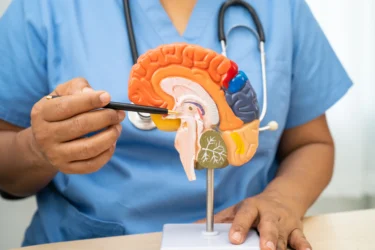
Acetylcholine is a chemical messenger which is responsible for the normal functioning of the body and brain. The acetylcholinesterase enzyme converts acetylcholine into choline and acetate. The acetylcholine synthesis decreases with age, but the acetylcholinesterase enzyme continues with its regular activity, leading to improper brain functioning. This improper brain functioning may affect memory and cognition in the long run, leading to dementia and Alzheimer’s disease. Potin and Saurel8, 2020 mention that hemp seeds’ protein can potentially inhibit the acetylcholinesterase enzyme. The inhibition of acetylcholinesterase may slow the progression of degeneration of brain diseases. Thus, it is suggested that hemp seed may have a potential for brain degeneration, but more research data is required to validate its efficacy in human health1.
Though studies show the benefits of Hemp seed in various conditions, these are insufficient, and there is a need for further studies to establish the true extent of the benefits of Hemp seed on human Health.
Based on my observations, hemp seed extracts contain antimicrobial, anti-inflammatory, anti-lipogenic, and collagen-promoting properties. Due to the presence of these properties, hemp seeds might be quite useful in reducing the occurrence of acne6.
Dr. Siddharth Gupta, B.A.M.S, M.D (Ayu)
Hemp seeds are healthy and nutritious nuts used by humans for various purposes. Some of the uses of hemp seed are:
One should always consult an Ayurvedic physician before consuming hemp seeds in large quantities or for therapeutic benefits. They will be the best person to prescribe the correct form and dosage for your health condition.
Some studies show that hemp seeds are a rich source of omega-3 fatty acids. These omega-3 fatty acids have anti-inflammatory properties. Due to these properties, hemp seeds might help in altering micro-organisms of the digestive tract which leads to improved digestion7.
Dr. Rajeev Singh, BAMS
People suffering from gastric irritations, ulcers, and poor metabolism should avoid using hemp seed. Pregnant and lactating mothers, the elderly, and children should use the hemp seed and its oil only after consultation with a doctor.
Also Read: Sadabahar (Periwinkle): Uses, Benefits, Side Effects and More By Dr. Rajeev Singh
Since cannabinoids, one of the constituents of hemp seeds, may increase the risk of bleeding in patients taking warfarin (an anticoagulant). People must avoid the consumption of hemp seed and consult doctors when on medication5.
Also Read: Chitrakadi Vati: Uses, Benefits, Side Effects & More!
Hemp seeds contain protein, carbohydrates, and healthy fats, which make them edible as a nutritional product. It also comprises potassium, sodium, iron, magnesium, and calcium, which adds to its nutritional value2.
Hemp seed is beneficial to human health in various ways. It acts as an anti-cancer and anti-hypertensive. It may also help in managing the degeneration of brain cells and atherosclerosis. Hemp seeds may also improve the absorption of calcium in bones. If you have the above-mentioned issues, consult the doctor and do not self-medicate1,2,3..
The chemical constituents of hemp seeds may act as anti-nutritional agents. These agents may decrease the absorption of nutrients in the body. This property of the chemical components reduces the nutritional value of the product2. If you want to include the hemp seeds, consult your doctor and do not self-medicate.
Hemp seed may help increase the longevity of cells and improve the morphology of various organs in the body, like the spleen and liver. It may also enhance learning and memory along with locomotor activity2. But, before taking these hemp seeds, consult your doctor and do not self-medicate.
People on anticoagulants (blood thinners) must avoid consuming hemp seeds. In addition, pregnant and lactating females, the elderly, and children should consult the doctor before consuming hemp seed5.
Disclaimer: The information provided here is for educational/awareness purposes only and is not intended to be a substitute for medical treatment by a healthcare professional and should not be relied upon to diagnose or treat any medical condition. The reader should consult a registered medical practitioner to determine the appropriateness of the information before consuming any medication. PharmEasy does not provide any guarantee or warranty (express or implied) regarding the accuracy, adequacy, completeness, legality, reliability, or usefulness of the information; and disclaims any liability arising thereof.
Links and product recommendations in the information provided here are advertisements of third-party products available on the website. PharmEasy does not make any representation of the accuracy or suitability of such products/services. Advertisements do not influence the editorial decisions or content. The information in this blog is subject to change without notice. The authors and administrators reserve the right to modify, add, or remove content without notification. It is your responsibility to review this disclaimer regularly for any changes.
Originating in the Vedic period, Ayurveda is an ancient Indian medicine system that relies on the principle that “life is an interplay of five elements-water, air, fire, space and earth.” Owing to Ayurveda, the knowledge of nature has been passed down from generation to generation. There are numerous ways to incorporate the science of Ayurveda into your life for healing; one such way is by using churnas, a mixture of herbs and natural ingredients. Trikatu churna is an age-old remedy used for some excellent health benefits. It is a mixture/powder (churna) of three (tri) most essential herbs (katu), namely adrak (ginger or Zingiber officinale), kali mirch (Black pepper or piper nigrum) and pippali (long pepper or Piper longum). In this article, we will learn more about Trikatu churna, its health benefits, side effects, precautions, etc1.
Did you know?
As already mentioned, Trikatu churna is a combination of Zingiber officinale, piper nigrum and piper longum3. All three herbs are rich in different nutrients and phytochemicals with medicinal value. The nutritional chart of Trikatu churna is given below:
Trikatu churna is rich in phytochemicals having a high medicinal value. The phytochemicals present in Trikatu churna include phytosterol, beta-sitosterol, acetic acid, amides, piperlongumine, genistein, E-beta carotene, etc2,5.
Trikatu churna shows numerous scientifically proven properties; some of which are mentioned below5:
Some of the potential benefits of Trikatu churna are described below.

Type II Diabetes is characterized by increased blood glucose due to reduced production or resistance to insulin (a hormone that regulates blood glucose). Ayurvedic formulations like churnas have been gaining the limelight for managing diabetes. Chabbra et al. conducted a study4 in 2022 that showed the presence of phytochemicals like genistein, piperlongumine, beta-sitosterol, beta-carotene, etc., in Trikatu churna. These phytochemicals regulate insulin resistance pathways and may help reduce blood glucose. Additionally, genistein may help improve insulin synthesis. This indicates that Trikatu churna may help manage Type II diabetes. However, to claim these results in humans, we need more studies. It is further advised not to self-medicate and consult your physician for proper management of diabetes5.

The liver is a large organ on the abdomen’s right side. It is mainly responsible for filtering waste from the body, including bilirubin, producing bile which helps to digest food and storing sugar in the body, which can later be used as an energy source. Different liver enzymes perform all these functions; any liver disease will be characterized by an abnormal value of these liver enzymes. Sharma et al. conducted a review1 that stated that Trikatu churna might exert a protective effect on the liver by improving liver enzymes and function. This may indicate that the Trikatu churna may protect the liver and help in conditions like alcoholic liver disease. However, more studies on humans are needed to support these claims. Additionally, it is advised not to rely on this churna as a remedy, and kindly consult your physician for the proper management of any liver disease1.

A lipid profile is a complete cholesterol test that measures total cholesterol, triglycerides, low-density lipoprotein (LDL), high-density lipoprotein (HDL), etc. Valsala et al., 2013 conducted an animal study5 to assess the effect of Trikatu churna on lipid profile. The consumption of this churna showed a declining trend in total cholesterol and triglycerides and helped increase high-density lipoprotein or good cholesterol levels. Thus, Trikatu churna may positively impact the lipid profile. However, we need more human studies to claim these results accurately. Also, it is advised not to consider this churna as an alternative to modern medicine; you should always consult your doctor for proper management of an abnormal lipid profile6.

Rheumatoid arthritis is a long-term inflammatory disease affecting the joints. It is manifested by inflammation and pain in the joints. Literature studies show that Trikatu churna may manage inflammatory conditions like rheumatoid arthritis. Vachana et al. conducted a study10 in 2014 which stated that Trikatu churna might help reduce inflammation due to the presence of phytochemicals like gingerol, piperine, etc. This indicates that Trikatu churna may potentially benefit rheumatoid arthritis and provide symptomatic relief. However, we need more studies to confirm these results with greater reliability. Additionally, you should not consider this churna as a remedy for managing rheumatoid arthritis; it is always advised to consult a physician for proper management7.

Digestive disorders are increasing globally and affecting people of all age groups. Christine et al. conducted a review6 in 2019 that stated that Trikatu churna might help improve digestion and gut flora and have a prebiotic effect. Additionally, it may have an anti-carminative effect (reduce flatulence) due to phytoconstituents like beta carotene, acetic acid, piperine, etc. Therefore, Trikatu churna may have the potential to manage digestive disorders and improve gut health. To claim these results in humans, we need more studies. It is further advised not to consider this churna as an alternative to modern medicine; kindly consider your doctor for proper management of any digestive disorder8.

Though there are studies that show the benefits of Trikatu churna in various conditions, these are insufficient and there is a need for further studies to establish the true extent of the benefits of Trikatu churna on human health.
Trikatu churna is believed to possess anti-inflammatory, anti-dyslipidaemic, and immune-modulatory characteristics and it might suppress certain pro-inflammatory cytokines. Based on some studies, Trikatu churna might be beneficial for managing COVID-19 cases11.
Dr. Siddharth Gupta, B.A.M.S, M.D (Ayu)
You must consult a qualified doctor before taking any herbal supplements. Do not discontinue or replace an ongoing treatment of modern medicine with an ayurvedic/herbal preparation without consulting a qualified doctor.
Also Read: Banana Leaf: Uses, Benefits, Side Effects By Dr. Smita Barode
Chanda et al. conducted an animal study7 that found Trikatu churna to be safe; however, there are no studies conducted on humans to assess the side effects of Trikatu churna. You should avoid excessive consumption of this churna as it may cause your blood glucose and lipid levels to drop too low.
However, if you experience any adverse reactions to Trikatu churna, it is advised to discontinue its intake and immediately contact a doctor or your Ayurvedic physician who has prescribed it. They will be able to guide you appropriately for your symptoms5,6,8.
Trikatu churna might be beneficial for managing various health issues like colds, coughs, nasal congestion, etc. Due to the presence of various phytochemicals, it might possess anti-microbial, anti-fungal, and analgesic properties and might be useful as a go-to remedy in common health conditions12.
Dr. Rajeev Singh, BAMS
Consuming Trikatu churna is okay if taken in moderate amounts. However, caution is warranted if you belong to special groups, as under:
Also Read: Gokshuradi Guggulu: Uses, Benefits, Side Effects and more!
However, you must always seek the advice of your Ayurvedic physician about the possible interaction of Trikatu churna with other drugs and follow the prescription thoroughly, as they will know your health condition and other medications you are taking.
Also Read: Talisadi Churna: Uses, Benefits and Side Effects By Dr. Rajeev Singh
Trikatu churna is an age-old remedy used for some excellent health benefits. It is a mixture/powder (churna) of three (tri) most essential herbs (katu), namely adrak (ginger or Zingiber officinale), kali mirch (Black pepper or piper nigrum) and pippali (long pepper or Piper longum)1.
Yes, Trikatu churna may help in weight loss and, thus, help manage obesity1.
Yes, Trikatu churna may help in the treatment of cough.
No, there are no proven results for the effects of Trikatu churna on hair loss.
The safety of Trikatu churna consumption in pregnancy is not well-established; it is therefore advised to avoid its use and consult your doctor for the same.
Disclaimer: The information provided here is for educational/awareness purposes only and is not intended to be a substitute for medical treatment by a healthcare professional and should not be relied upon to diagnose or treat any medical condition. The reader should consult a registered medical practitioner to determine the appropriateness of the information and before consuming any medication. PharmEasy does not provide any guarantee or warranty (express or implied) regarding the accuracy, adequacy, completeness, legality, reliability or usefulness of the information; and disclaims any liability arising thereof.
Links and product recommendations in the information provided here are advertisements of third-party products available on the website. PharmEasy does not make any representation on the accuracy or suitability of such products/services. Advertisements do not influence the editorial decisions or content. The information in this blog is subject to change without notice. The authors and administrators reserve the right to modify, add, or remove content without notification. It is your responsibility to review this disclaimer regularly for any changes.
“With the changing times, not only the country’s policymakers but the whole world is realising the importance of Ayurveda. Who would’ve thought that people in the upcoming generations would prefer a bottle of gooseberry or bottle gourd juices over carbonated drinks?” Despite this realization of the health benefits of plants and fruits, there are fruits like Phalsa which, although are high in nutrients but low in popularity. Phalsa is a plant that originates in Southeast Asian countries like India, Nepal, Sri Lanka and Bangladesh and is mainly grown for its fruit. The scientific name of the Phalsa fruit is Grewia asiatica, also known as the Indian Sherbet berry. It is a seasonal plant and the fruits are generally obtained in the summer. Phalsa fruit resembles grapes in its shape and size. They are purple in colour with a sour-sweet taste. The fruit is a powerhouse of vitamins and minerals and offers many health benefits; let us know more about those benefits1.
Phalsa fruit is rich in carbohydrates, fibres, proteins, vitamins A, B3 and C and minerals like potassium, calcium, iron and phosphorus. The phytochemicals present in Phalsa fruit include anthocyanins, tannins, phenols and flavonoids. The nutritional chart of this fruit is given below.
Phalsa fruit shows numerous scientifically proven properties; some of which are mentioned below1:
I’ve discovered that Phalsa fruits have a cooling effect on the body. Phalsa fruit is rich in phenols. This property makes it a potential natural remedy for excessive body heat9.
Dr. Siddharth Gupta, B.A.M.S, M.D (Ayu)
Some of the potential benefits of Phalsa fruit are described below.

Diabetes (Type I & II) is characterised by an increase in blood glucose due to a reduction or resistance to insulin (a hormone that regulates blood glucose). Literature shows that fruits rich in polyphenols may positively impact diabetes. Parveen et al. conducted a study2 on diabetic rabbits in 2013 to assess the effect of Phalsa fruit on blood glucose. This study showed a reduction in rabbits’ blood glucose after administering Phalsa fruit. Additionally, this fruit has a low glycemic index and the presence of polyphenols may help reduce blood glucose levels. This indicates that Phalsa fruit may help manage diabetes. However, to claim these results in humans, we need more studies. It is further advised not to self-medicate and consult your physician for proper management of diabetes3.

Dyslipidemia is characterised by an increase in total cholesterol and triglycerides. Studies have shown that Phalsa fruit may potentially control the altered parameters in dyslipidemia. An animal study4 conducted by Parveen et al. in 2013 showed a positive relationship between the consumption of this fruit and lipid levels. Rabbits administered Phalsa fruit extract (200mg/kg) showed reduced total cholesterol and triglycerides. This may indicate that this fruit’s consumption may help manage dyslipidemia. However, more studies on humans are needed to support these claims. Additionally, it is advised not to rely on Phalsa fruit as a remedy for managing dyslipidemia and kindly consult your physician for the proper management of dyslipidemia.

Breast cancer is one of the most common cancers affecting women worldwide; different ayurvedic treatments are being tested for their effectiveness towards breast cancer. A review2 by Muhammed et al. in 2013 states that Phalsa fruit contains smart molecules called anthocyanins which help reduce the multiplication of abnormal cells and the risk of cancers. Thus, it may be concluded that Phalsa fruit may reduce breast cancer risk. However, we need more human studies to claim these results accurately. Also, it is advised not to consider Phalsa fruit as an alternative to modern medicine; you should always consult your doctor for proper management of breast cancer.

Traditionally, herbs, spices, leaves and fruits obtained from plants were used for managing bacterial infections. Muhammed et al. conducted a review2 in 2013 to test the efficacy of Phalsa fruit on different bacteria. The presence of polyphenols in Phalsa fruit inhibited the growth of S.typhi bacteria; thus, it may have the potential to manage bacterial infections like Typhoid caused by S.typhi bacteria. However, we need more studies to confirm these results in humans. Additionally, you should not consider Phalsa fruit as a remedy for managing Typhoid; it is always advised to consult a physician for proper management of Typhoid.

Depression is a mood disorder that results in sadness and loss of interest and may affect everyday activities. Previous studies have shown that healthy nutrition may help in managing various ailments. A study4 conducted by Imran et al. in 2021 stated that Phalsa fruit, due to the presence of antioxidants like phenols, anthocyanins, flavonoids, etc., may help in managing depression. Additionally, this fruit can potentially reduce anxiety (anxiolytic effect). Therefore, Phalsa fruit may have the potential to manage depression. To claim these results for humans, we need more studies. It is further advised not to consider Phalsa fruit as an alternative to modern medicine; kindly consider your doctor for proper management of depression5.

Though there are studies that show the benefits of Phalsa fruit in various conditions, these are insufficient and there is a need for further studies to establish the true extent of the benefits of Phalsa fruit on human health.
Let me give you a tip! Phalsa fruit might take care of your skin. Phalsa fruit is rich in antioxidants and numerous vitamins and minerals, which makes Phalsa a potential contributor to achieving flawless skin10.
Dr. Rajeev Singh, BAMS
You must consult a qualified doctor before taking any herbal supplements. Do not discontinue or replace an ongoing treatment of modern medicine with an ayurvedic/herbal preparation without consulting a qualified doctor.
Phalsa fruit is considered safe when eaten in minimal amounts. A few side effects related to the consumption of Phalsa fruit include:
However, if you experience any adverse reactions to Phalsa fruit, it is advised to discontinue its intake and immediately contact a doctor or your Ayurvedic physician who has prescribed it. They will be able to guide you appropriately for your symptoms.
Also Read: Mango (Aam): Uses, Benefits, Side Effects by Dr. Smita Barode
Consuming Phalsa fruit is okay if taken in moderate amounts. However, general precautions must be followed in the following conditions1:
Also Read: Hadjod (Cissus Quadrangularis): Uses, Benefits, Side Effects & More!
However, you must always seek the advice of your Ayurvedic physician about the possible interaction of Phalsa fruit with other drugs and follow the prescription thoroughly, as they will know your health condition and other medications you are taking.
Also Read: Shallaki (Boswellia serrata): Uses, Benefits, Side Effects & More!
Phalsa fruit resembles grapes in its shape and size. They are purple in colour and sour to sweet in taste1.
Phalsa fruit is called Grewia asiatica1.
In Hindi, Phalsa fruit is called Sherbet berry.
No, there are no proven results on the efficacy of the Phalsa fruit for reducing weight.
The safety of Phalsa fruit consumption in pregnancy is not well-established; it is therefore advised to consult your doctor if you plan to add Phalsa fruit to your diet.
Disclaimer: The information provided here is for educational/awareness purposes only and is not intended to be a substitute for medical treatment by a healthcare professional and should not be relied upon to diagnose or treat any medical condition. The reader should consult a registered medical practitioner to determine the appropriateness of the information and before consuming any medication. PharmEasy does not provide any guarantee or warranty (express or implied) regarding the accuracy, adequacy, completeness, legality, reliability or usefulness of the information; and disclaims any liability arising thereof.
Links and product recommendations in the information provided here are advertisements of third-party products available on the website. PharmEasy does not make any representation on the accuracy or suitability of such products/services. Advertisements do not influence the editorial decisions or content. The information in this blog is subject to change without notice. The authors and administrators reserve the right to modify, add, or remove content without notification. It is your responsibility to review this disclaimer regularly for any changes.
Next Page »« Previous Page